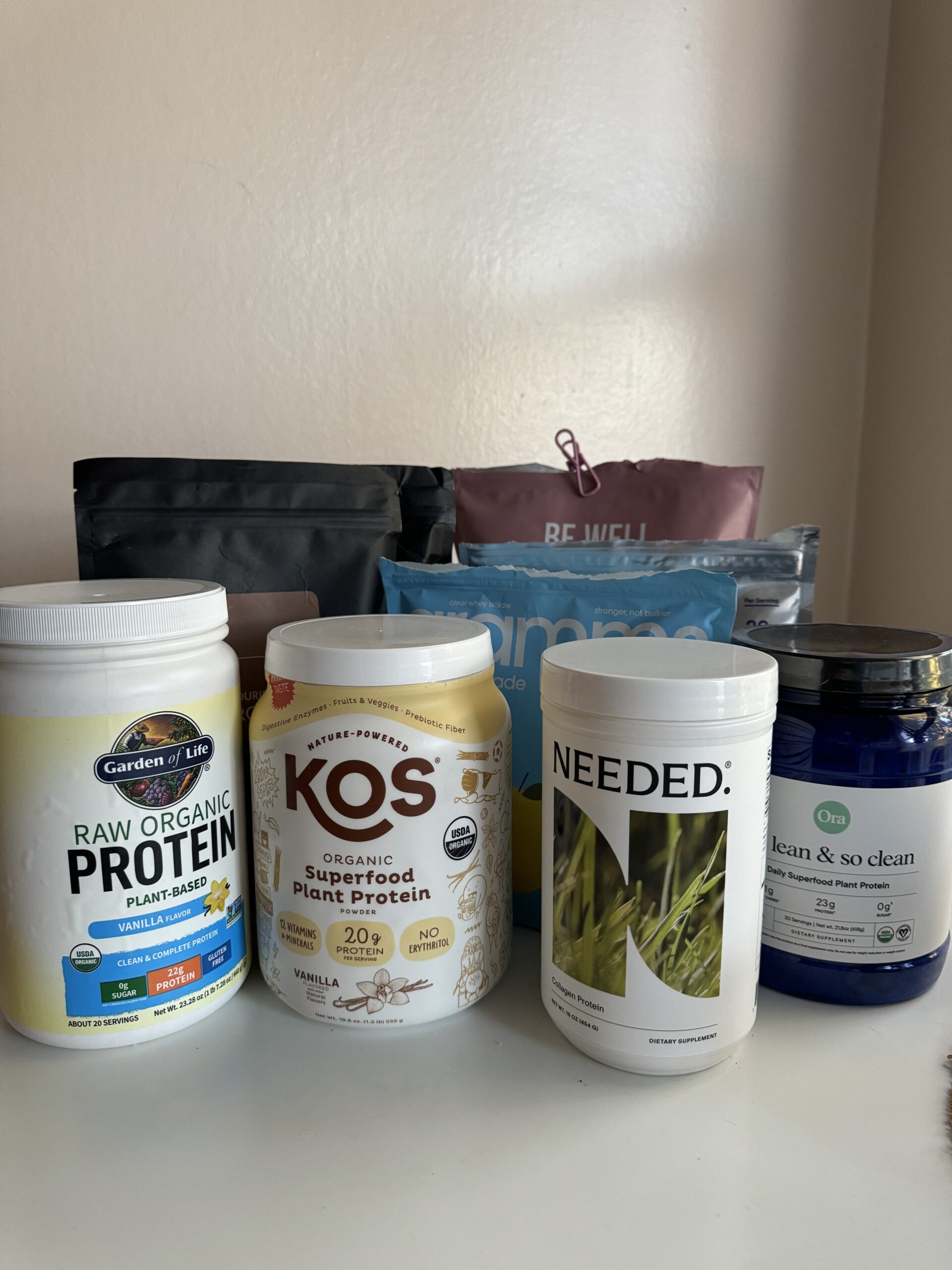
How I Use ASMR For My Anxiety
A little over a year ago, I was having frequent enough panic attacks to finally schedule a psychiatry appointment to discuss a possible diagnosis and medication. My doctor confirmed that it sounded like I had an anxiety disorder, but she suspected it was actually the symptom of something else altogether, rather than the root cause of my panic attacks.
“Have you ever been evaluated for ADHD?” she asked.
“My doctor confirmed that it sounded like I had an anxiety disorder, but she suspected it was actually the symptom of something else altogether, rather than the root cause of my panic attacks.”
I had not. But my brother had ADHD and I’d suspected at various points in my life that I might, too. I’d just always been able to manage the symptoms (racing thoughts, constant task-switching, sensory overstimulation, procrastination) well enough that they weren’t having a meaningful impact on my life. When I mentioned this to my doctor, she said that wasn’t uncommon.
“ADHD doesn’t mean there’s anything wrong with your brain,” she said. “It just means that when we live within systems that require us to think, learn, or work a different way, we can hit a wall trying to make ourselves fit into those expectations.”
“’ADHD doesn’t mean there’s anything wrong with your brain,’ she said.”
Most people experience this wall in school, but I was experiencing it as a self-employed business owner juggling multiple contracts, a new intensive writing workshop, and all the usual life administration of being a full-time working mother. No matter how hard I’d worked on building up my executive functional skills, the fact was that there were zero boundaries between my work, writing, domestic, and personal lives. Add to that the background soundtrack of a young child and two very rowdy dogs and I was basically walking around with earplugs, near tears, and jumping out of my skin any time someone touched me.
Cue the panic attacks.
Part of my treatment plan included finding ways to ground myself, particularly before bed, so that I could calm my racing thoughts and rest. I tried everything suggested: Exercise, meditation, yoga, and sensory-based exercises meant to get me out of my head and into my body. But in the quiet moments, I’d somehow find my mind wandering back into its spiral, hopping from to-do lists to song lyrics to revisiting a cringe-y comment I’d made three years ago with all the speed of an Olympic-level downhill skier. An awareness of how I was not doing the task at hand properly would hit me, shame closely on its heels. No matter how I tried, it seemed that if I was in charge of running my own grounding exercises, I was likely going to succumb to the exact issue I was trying to treat: A mind doing its very best to give Lorelai Gilmore a run for her money.
“I tried everything suggested: Exercise, meditation, yoga, and sensory-based exercises meant to get me out of my head and into my body.”
One evening, while scrolling on my phone during my pre-bedtime savasana (oops) I came across this video.
“Don’t mind me I’m just going to be plucking some things, some negativity, some stress I see, okay?” a woman whispered while she made a plucking and pulling motion into the camera. My ears perked up at the soft breathiness of her voice, and as her hand pulled away from me I felt a corresponding tug in my sternum. “There we go,” she whispered.
“As the woman continued to pull, I felt a pleasant sensation throughout my body, sort of as though my insides were getting goosebumps.”
As the woman continued to pull, I felt a pleasant sensation throughout my body, sort of as though my insides were getting goosebumps. “That was a long one,” she said, and then rubbed her hands together as if she was combining a pile of loose hairs into a ball. She opened her palm and blew on it, as if sending the invisible stress hairs away. My body tingled.
What is this sorcery? I thought.
I did a deep dive on the hashtags and other videos on the woman’s page, and learned that the whispery “stress-plucking” video I’d just watched was a type of ASMR, which stands for autonomous sensory meridian response, the phenomenon some people experience from certain visual and auditory stimuli. The sensation is most often described as “tingles,” and the stimuli are called “triggers.” Popular triggers include tapping, scratching, clicking, whispers, and hand motions that can be reiki-like or methodically applied to tasks like brushing hair, folding towels, smoothing fabrics, or turning pages of a book.
“The whispery ‘stress-plucking’ video I’d just watched was a type of ASMR, which stands for autonomous sensory meridian response, the phenomenon some people experience from certain visual and auditory stimuli.”
Though the term ASMR was only coined in 2010, the phenomenon itself is not new; in fact, it was not new to me! People who experience ASMR often do so in childhood, attributing it to some kind of odd personal quirk. I remember specifically that this tingling, pleasant calm would come into my body during a theater class I took as a day camper in elementary school in our morning warm-ups: The teacher would instruct us to close our eyes and then guide us through the steps of a roleplay like pretending we were an astronaut dressing for space, or a lion waking up and scratching our backs against a boulder. Occasionally, I would experience ASMR during massages, in-person yoga classes, and even eye doctor appointments.
Since the phenomenon creates a calming, relaxed sensation in the body, it’s no surprise that the majority of ASMR videos are often titled with things like “For Your Deepest Sleep!” Personally, I was drawn to the immediate sense of pleasure they offered, and the way that these weird little vids could do what hours of meditation attempts could not: Totally capture my attention long enough for my brain to fully relax, letting me focus on the pleasant sensory experience in my body.
The ASMR world is as diverse and varied as any other content out there. You can choose from videos with tags like “fast, aggressive,” “mouth sounds,” and even pick from the quality of whispering you prefer (“clicky” vs “breathy”). You can even forgo voices altogether with “no talking” options. The video might feature the mic itself, with a close-up of various objects being dragged, tapped, and scratched across it; some videos have people removing and cleaning the contents of various drawers in their house, or applying their skincare, all with the sounds amplified to a weirdly satisfying volume.
“I was drawn to the immediate sense of pleasure they offered, and the way that these weird little vids could do what hours of meditation attempts could not.”
After a few nights scrolling around, clicking haphazardly across the vast spectrum of ASMR videos, I found my own little corner of the community that worked for me: a genre called “close personal attention.” Like my beloved “stress plucking” gateway vid, these feature content creators who look right into the camera and speak to the viewer directly. Sometimes they give makeovers, do your skincare, or yes, pluck, snip, and pull away all your stress. And unless you click specifically on “no talking” videos, they are almost always whispering affirming, kind words. “You’re doing a good job,” and “You are not a burden” are some of my personal favorites.
“There’s something about hearing certain words from another person that just feels more true than when you are sitting alone and trying to say them to yourself.”
Sometimes, the videos are weird. One of my favorite creators does roleplays that usually incorporate some kind of close personal attention and care using makeup and skincare, but she sometimes does it as an alien or even a cockroach. Once, I watched a video where a content creator was a surgeon removing all the half-finished and forgotten clutter in my brain; the visual was a close shot of a tube filled with slime and small toys that she pulled out using a flashlight and tweezers, all the while softly giving me permission to relax. “You can let this one go. It’s okay. You are not a failure.”
The premise was, let’s be honest, totally silly. But her words were powerful. There’s something about hearing certain words from another person that just feels more true than when you are sitting alone and trying to say them to yourself. Especially if, like me, the words you’re attempting to say to yourself (“You can take a break. You deserve rest.”) are in direct conflict with the other words on repeat in the back of your mind (“You have so much left to do. You are so lazy, you’ll never amount to anything if you can’t push through.”).
“It’s like getting pulled into a trance. I’m no longer thinking about anything. I’m just letting myself be.”
Sometimes, the ridiculous nature of the roleplay actually helps to disrupt my thoughts. A creator dressed as a woodland fairy who wants to look through my bag, pulling out things like a squishy toy loaf of bread and bartering with me for a golden, swirling, gently-glugging potion? At first, I’ll be a little preoccupied with the details, maybe even laughing at the silliness. And then I find my muscles relaxing, my heart rate slowing down, that tingling starting at the base of my skull and gently traveling on a current throughout my body. It’s like getting pulled into a trance. I’m no longer thinking about anything. I’m just letting myself be.
Watching ASMR has helped my brain to become quiet enough to allow me to really receive the affirming words from these roleplays, rather than slipping into anxiety-induced rationalization or arguments. “You deserve rest,” the creator says. With no other voices in my mind and my body relaxed and calm, it’s become easier and easier to accept that it must be true.
Stephanie H. Fallon is a Contributing Editor at The Good Trade. She is a writer originally from Houston, Texas. She has an MFA from the Jackson Center of Creative Writing at Hollins University. She lives with her family in the Blue Ridge Mountains of Virginia, where she writes about motherhood, artmaking, and work culture. You can find her on Instagram or learn more on her website.




